Queen Victoria agave (
Agave victoria-reginae)
is highly prized by gardeners throughout the U.S. Southwest and beyond for its beauty as well as its small size. Named after Queen Victoria, this long-lived agave is known for its ability to thrive in seemingly inhospitable conditions, including the hot, reflected sun of the desert landscape. You don’t expect to see royalty growing in the desert, but this Mexican native deserves a prominent place in the arid landscape where its beauty can be admired by all.
More guides to growing succulents
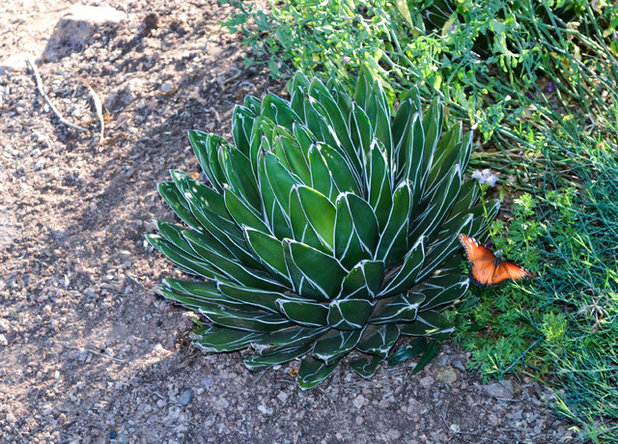
Noelle Johnson Landscape Consulting
Botanical name: Agave victoria-reginaeCommon names: Queen Victoria agave, Victoria agave
Origin: Native to the Chihuahuan Desert region of Mexico
Where it will grow: Hardy to 10 degrees Fahrenheit (USDA zone 8; find your zone)
Water requirement: Drought tolerant once established, but does best when watered deeply twice a month in the summer and once a month in spring and fall
Light requirement: Full sun
Mature size: Up to 18 inches high and wide
Benefits and tolerances: Drought tolerant
When to plant: Fall or spring from offsets or seed
Shown: Queen Victoria agave being visited by a queen butterfly (
Danaus gilippus)
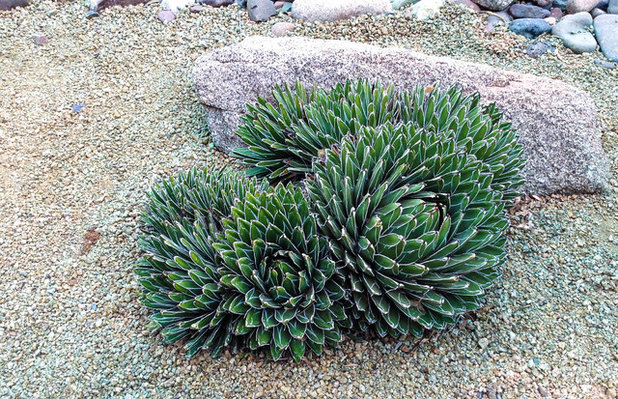
Noelle Johnson Landscape Consulting
Distinguishing traits. The tight rosette shape of Queen Victoria agave resembles that of an artichoke. As the plant grows older, its form becomes decidedly spherical. The rosette is made up of numerous dark green leaves with distinctive white margins. The edges of the succulent leaves are smooth, leading up to a single prominent spine at the top of each leaf.
The shape and arrangement of the leaves help to channel rainwater toward the base of the plant, taking advantage of the sporadic rainfall in the arid regions where it grows. Although native to the deserts of Mexico, this agave can be found gracing the landscapes in many desert and semiarid landscapes throughout California and the Southwest.
Shown: A Queen Victoria agave parent plant with several offsets
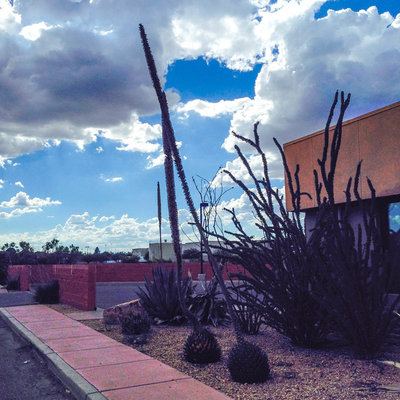
Noelle Johnson Landscape Consulting
Like most species of agave, Queen Victoria agave will send up a flowering stalk toward the end of its life and then will die. This is a natural process, and the flowering stalk is its crowning achievement and is one of the ways that it reproduces. There is nothing you can do to prevent your agave from flowering.
A commonly asked question is, “How long will it take before my agave flowers?” The answer depends on the species of agave — some flower earlier than others — as well as how old it was when it was planted, and whether or not it is growing in the landscape or in the wild.
Queen Victoria agave is well known as a longer-lived agave, often waiting seven to 15 years before flowering in the landscape. Agave grown in a landscape setting tend to flower earlier than those in the wild due to the increased availability of water.
Shown: Flowering Queen Victoria agave
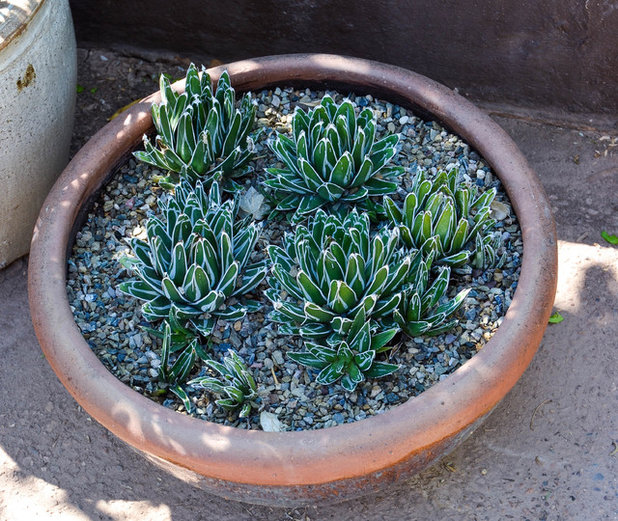
Noelle Johnson Landscape Consulting
New plants are produced via offsets from the parent plant throughout the life of the agave and also from seed from the flowering stalk at the end of its life.
There are several varieties of Queen Victoria agave, including the small variety, ‘Compacta’ (shown here), which reaches 10 inches high and wide. Variegated varieties include ‘Golden Princess’, with gold edges, as well as ‘White Rhino’, which has cream-colored edges that contrast with the dark green foliage toward the middle of each leaf.
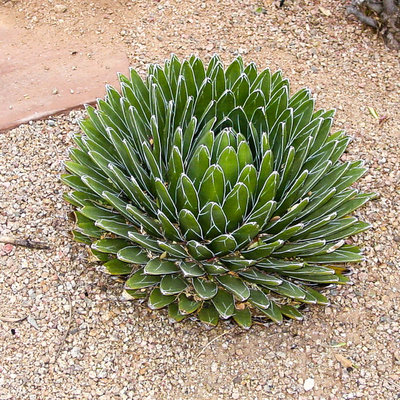
Noelle Johnson Landscape Consulting
How to use it. Because of Queen Victoria agave’s smaller size, it looks best near entryways and along pathways where its beauty can be appreciated up close. Avoid placing it farther out in the landscape where it can be overlooked. Plant it in groups of three or more for best impact. The round shape of this agave adds great textural contrast when it’s planted next to boulders.
As with most agaves, this one looks great in containers. Choose a container that is a similar size to the agave for best dramatic effect. A great way to use Queen Victoria agave in containers is to place a container on either side of an entry where the plant’s unique beauty can be viewed by visitors. This is a great option for spots that get intense, afternoon sun where most flowers won’t grow.
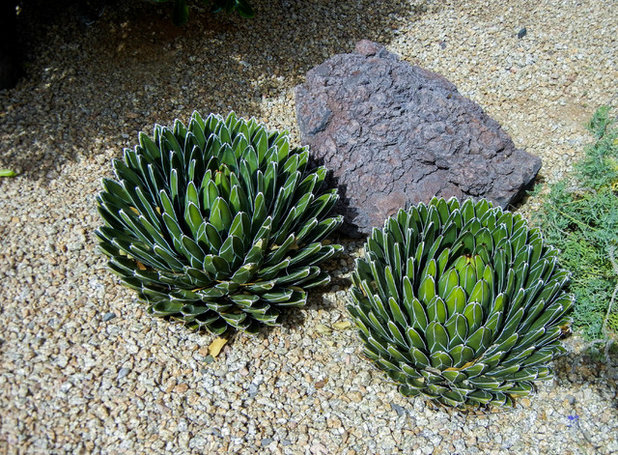
Noelle Johnson Landscape Consulting
Planting notes. Plant it in well-drained or rocky soil. Don’t plant it in shallow depressions; if needed, build a slight mound and then plant. If you’re growing this agave in a container, use a potting mix specially formulated for succulents.
When shopping for agaves, select those growing in smaller containers, which are younger and will last longer in the landscape before flowering. While older specimens may look more impressive initially, they will not last as long before flowering.
If the leaves turn yellow during the summer, water deeply twice a month and the agave’s dark green color should return in the fall with cooler temperatures.





